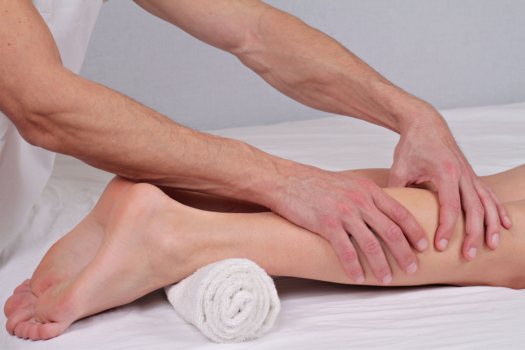
Sciatica is a condition that causes pain, numbness, and tingling along the sciatic nerve, which runs from the lower back through the hips and buttocks and down each leg. Sciatica can be caused by various factors, such as a herniated disc, spinal stenosis, pregnancy, or piriformis syndrome. Living with sciatica can be excruciating, impacting your daily life and mobility. While various treatment options exist, understanding the pressure points associated with sciatica can provide targeted relief and help you manage the pain more effectively.
Pressure points are specific areas on the body where concentrated nerve endings and blood vessels intersect. Stimulating these points can have a profound impact on pain relief and overall wellbeing. In this article, we will explore some of the most effective pressure points for sciatic nerve pain relief.
Piriformis Muscle
Several techniques can be used to target the piriformis muscle. One effective method is to apply gentle pressure with the fingertips or a tennis ball to the buttock region. Massaging the area in circular motions for a few minutes can provide relief. Skilled massage therapists can use various massage techniques to relax the piriformis muscle and surrounding tissues, relieving pressure on the sciatic nerve.
Whether you have just started to experience sciatic pain or you are in the last stages of sciatica, exercises that focus on stretching the piriformis muscle, such as the seated piriformis stretch and pigeon pose, can release tension and alleviate pressure on the sciatic nerve. In addition, strengthening exercises targeting the core and lower back muscles can improve posture, provide better spinal support, and reduce the risk of sciatic nerve compression.
Acupressure Points for Sciatica
Acupressure is a technique that involves applying pressure to specific points on the body to stimulate the flow of energy and relieve pain. Acupressure can be a natural and effective way to treat sciatica pain, as it can relax the muscles, reduce inflammation, and increase blood circulation.Acupressure points can be massaged with the fingers, thumbs, elbows, or special tools. There are several acupressure points that can alleviate sciatica pain, depending on the location and severity of the symptoms. Here are some of the most common ones.
Gallbladder 30 (GB30)
Urinary Bladder 40 (UB40 or BL40)
Urinary Bladder 23 (UB23 or BL23)
Urinary Bladder 62 (UB62 or BL62)
These are some of the most effective pressure points for sciatic nerve pain relief. However, they are not a substitute for medical advice or treatment. If you have severe or persistent sciatic nerve pain, you should consult your doctor before trying any self-care measures.
Patients who have had discectomies or less invasive microdiscectomies for herniated discs may experience sciatica if their discs become reherniated, which often occurs if there is a large hole in the outer ring of the disc after surgery. Fortunately, there is a new treatment available. Barricaid is a device shown to reduce the risk of reherniation by closing the hole in the disc after a discectomy, and 95 percent of Barricaid patients did not undergo a reoperation due to reherniation in the 2-year study timeframe. This treatment is done immediately following the discectomy—during the same operation—and does not require any additional incisions or time in the hospital.
If you have any questions about the Barricaid treatment, ask your doctor or contact us at 844-288-7474.
For full benefit/risk information, please visit: https://www.barricaid.com/instructions.


Comments